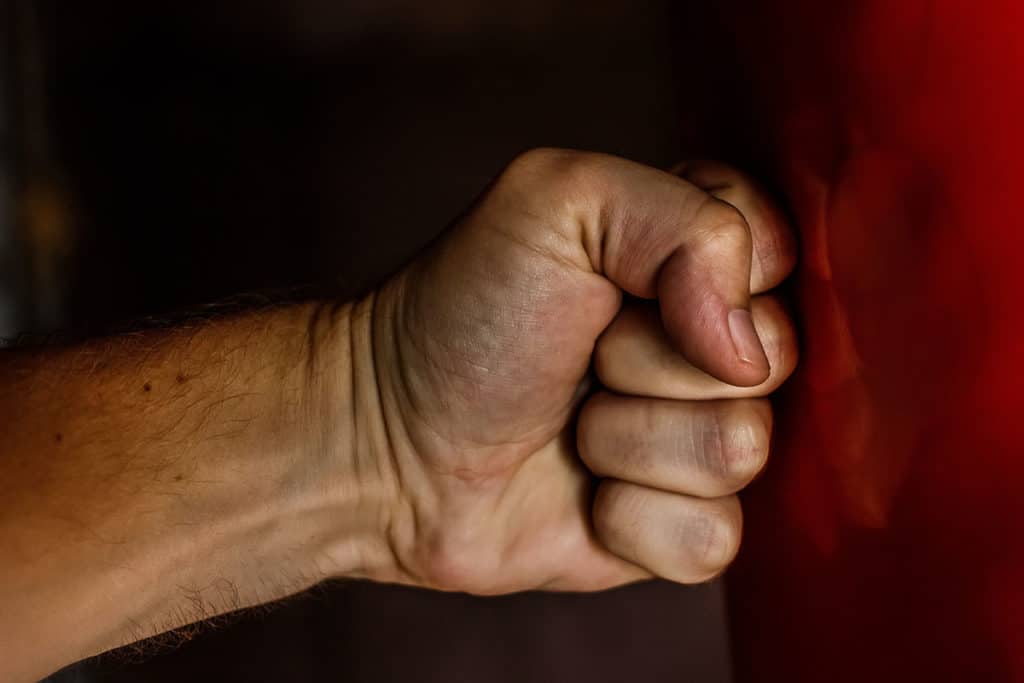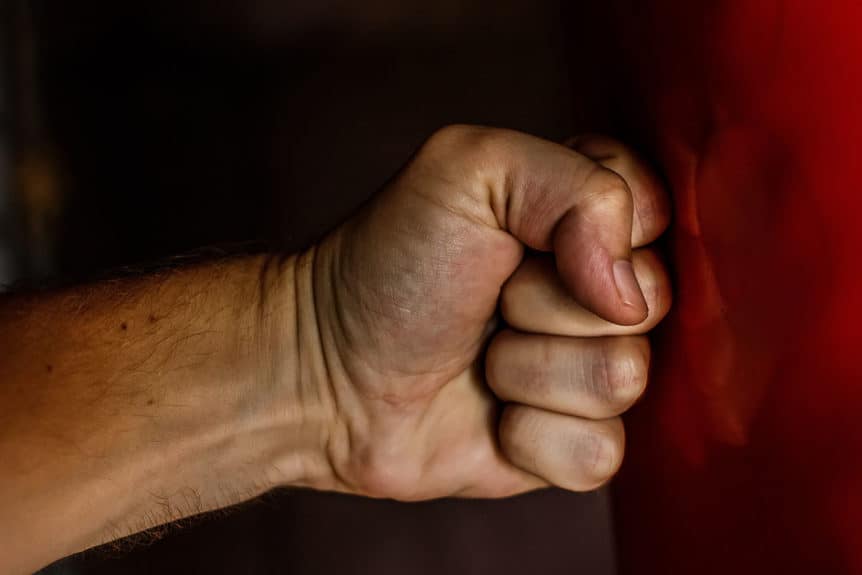
TaeKwondo is a martial art thought to be predominantly kicks, but quite a variety of hand strikes are taught. We’re going to list most of the punches taught in TaeKwondo and the mechanics of each one.
In TaeKwonDo throwing the right punch or strike at the right time and using the right technique requires practice and skill. Its also a matter of learning how to do it correctly that will give you the edge in any tournament.
There are many punching combinations in TaeKwonDo. Although some combinations work better then others! Here is a guide to on the different punches and strike combinations in TaeKwonDo so you can have more options available to you when training for your next competition.
Punches Are A Secret Weapon
In TaeKwondo punches are an underutilized tool in competitions. Many competitors focus so much on landing kicks that they forget about their hands. Not only forget to throw them, but also forget to defend them.
Depending on the type of competition and which organization is running the event a punch can be between 1-2 points. A competitor can stack up points landing punches if the opponent is leaving themselves open.
The Mexican National Team for example has become a top team on the world scene in the last two decades. If you ever see one of the competitors compete, you will notice they throw more punches than most other teams. They are known for boxing in Mexico, so the TaeKwondo team has implemented more punching into their training.
How To Throw A Punch In Taekwondo
Most think that punching just involves the arm, but it involves the whole body.
- Feet: Your feet are the foundation on a punch. They need to be grounded to the floor to be able to generate power. Stay on the balls of your feet in order to be able to step, turn, and pivot during punches.
- Abdomen: Your abdomen is the center that connects the power generated by your feet to your hands. Keeping a tight core will prevent you from losing the power generated during a punch.
- Arms: Obviously your arms that do the punching movement are important. Make sure to keep a firm fist and wrist when throwing a punch to avoid injury.
Types Of Punches Thrown In TaeKwondo
TaeKwondo has an assortment of punches used for specific purposes. Below are 10 punches used in TaeKwondo with the purposes and mechanics of each detailed.
The Jab
In TaeKwondo, the jab is used to measure distance and defense. It is also used to bait an opponent to act and open themselves up for a counter. You can prod an opponent with a jab when they come in to attack or get them to react to set up a kick.
Straight or Cross Punch
A punch with your back hand that involves rotating your body to generate power. Hitting the opponent with your first two knuckles. It’s the same movement as in boxing and it can be thrown either to the head or body depending on the organization. Straight punches to the body are great to use for when an opponent is moving forward.
Uppercut
To execute this punch, you turn your body to load the punch and send it upward at an opponent. Both hands can be used and it is good for close combat to rip a body shot.
Hook Punch
A short compact punch used to hit the sides of an opponent. Your body makes a tight turning movement when throwing this punch. This punch can be used to hook over an opponent’s guard to strike them or hit a body shot in close combat.
Backfist
There are a few different types of backfist, but this first type is performed with the front hand. It’s similar to a jab, but you hit with the padded part on the back of your hand. The motion is a flick of your hand reaching out and hitting the side of the opponent’s head.
Turn Backfist/Spinning Backfist
These are the other two types of backfists used in TaeKwondo and there’s a slight difference between the two. A turn backfist is a 180 degree turn before hitting the opponent with the back of your hand.
The spinning backfist is a 360 degree spin that generally comes another strike that initiates the spin. Both are usually set up with a punch or kick to set the backfist up.
(Depending on the organization, you may only be allowed to hit with the padded part of your hand.)
Hammerfist
To throw this punch, you do the same motion you would as if you were swinging a hammer. A downward motion hitting with the padded part of your hand that can go over an opponent’s guards. This punch can also be thrown off a turn or spin to add more force.
Extended Knuckle Punch
You make a fist and use your thumb to push your index or middle finger up and reinforce the finger’s middle joints. It is used as a stinging strike to hit a weak part of an opponent’s body such as the temple.
Spear Hand Strike*
This is an open hand strike, where all your fingers are fully extended and it resembles a spear. Target areas for this strike are soft parts of the body like the side of the neck. (The asterisk next to the name is, because while it is hand strike taught in TaeKwondo it is illegal in tournaments. Also hand strikes to the throat are illegal.)
Knife Hand Strike*
This is the karate chop move, where you chop down on an opponent’s neck with the outside ridge of your hand. (This is also an illegal move in competitions, as well as being a neck strike.)
Ridge Hand Strike
For this strike, your hand and fingers are extended and you strike with the meaty part of your hand under the thumb. This is a really good strike, because it is thrown the similar to a hook and overhand punch.
But it covers more distance to the hand being open and can easily pass over an opponent’s guard and strike the sides of their head. (Also legal in competitions.)
Palm Strike/Palm Heel Strike*
Your hand is open with the fingers tucked in to strike the chin or nose. It is a good self defense technique, but very illegal in competitions.
Throat Strike/Tiger Claw*
You form a C with your hand and strike at the throat of your opponent. Tiger Claw is not allowed in any competition.
There are also elbow strikes taught in TaeKwondo, but this is not a hand strike.
Different Punching Rules Between Tae KwonDo Organizations

Each different TaeKwondo governing body has their own rules for punching and the techniques they allow. Here is a quick list of the different rules of the main organizations.
- World TaeKwondo Federation(WTF): In WTF, you may only hit with straight strikes using the padded knuckle part of your hand. You can only land this punch to the trunk or abdomen of the opponent. No hooks or uppercuts.
- International TaeKwondo Federation(ITF): The big difference between from WTF rules are that punch strikes are allowed to the head. Also in ITF rules, you are allowed to throw a more variety of punches rather than just straight punches.
- American TaeKwondo Association(ATA): ATA point sparring regulations are similar to full contact rules of World TaeKwondo. Only straight punches to the trunk are allowed.
How To Practice Punching in Taekwondo?
There are many different methods used to train punches in TaeKwondo, but here are the 3 most common.
- Punching Bag: Schools generally have some type of punching bags present on the mats. Instructors make students do numerous rounds of bagwork to sharpen punching skills. A good one is from Everlast can be found on Amazon for about $60 currently
- Mitt Training: Mitt training is also a common technique instructors use to practice punching. They hold mitts for their students to help them learn the coordination of the punches, while getting conditioning. You can get a pair from a company like Valleycomfy on Amazon for about $20 currently
- Technical Sparring: This is where students are matched up with a partner and go less than 50% practicing techniques on each other.
Final Thoughts
Hopefully, the techniques and rules for punching in TaeKwondo that have been explained here, are more clear after reading this article.
Just don’t let anyone tell you that there aren’t any punching or striking techniques in TaeKwonDo or that they aren’t important in your TaeKwonDo training.
As you see there are some great punching techniques in TaeKwondo that would benefit any student to know.

